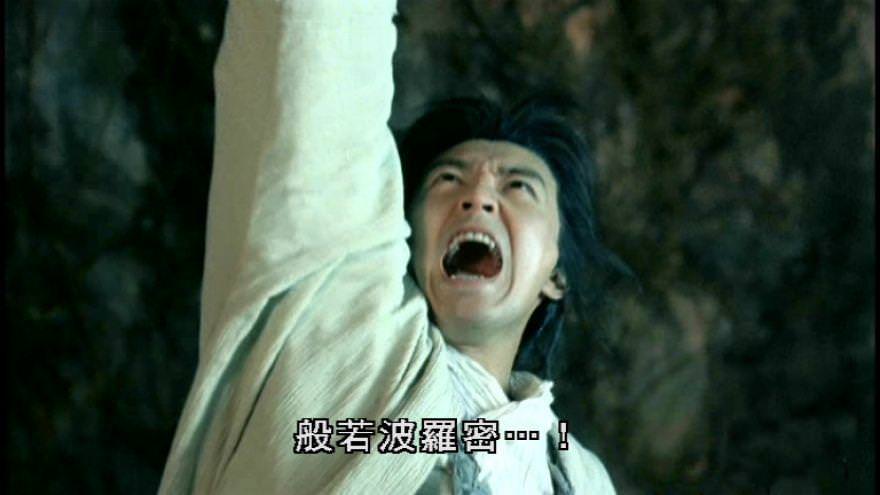Concerning Gohonzon: Part I
The name Gohonzon (ごほんぞん) is the romanization of the Japanese pronunciation of the Chinese word Yu Benzun (御本尊). The word Yu (御) is honorary prefix, while Benzun (本尊) means object of enshrinement in this context. For members of Soka Gakkai (創価学会) and Nichiren Shoshu (日蓮正宗), it may be considered as the object of veneration, at least when they are practicing Gongyo (勤行).
 From an artistic point of view, Gohonzon is technically a piece of calligraphy written in mixed Chinese regular script (楷书), semi-cursive scripts (行书) and Siddham scripts, they were first produced by Nichiren (日蓮, 1222-1282), a Japanese monk who lived in the Kamakura period (鎌倉時代). The first Gohonzon (called Yojihonzon, 楊枝本尊) was designed and inscribed by Nichiren in November 19, 1271 (文永8年10月9日), when he was 49 year-old. Between 1271 to 1282, Nichiren actually designed and produced more than 120 mandalas for his disciples, not all of them were identical. But the general trend is that the design of the Nichiren's mandala was getting more complicated as time progressed.
From an artistic point of view, Gohonzon is technically a piece of calligraphy written in mixed Chinese regular script (楷书), semi-cursive scripts (行书) and Siddham scripts, they were first produced by Nichiren (日蓮, 1222-1282), a Japanese monk who lived in the Kamakura period (鎌倉時代). The first Gohonzon (called Yojihonzon, 楊枝本尊) was designed and inscribed by Nichiren in November 19, 1271 (文永8年10月9日), when he was 49 year-old. Between 1271 to 1282, Nichiren actually designed and produced more than 120 mandalas for his disciples, not all of them were identical. But the general trend is that the design of the Nichiren's mandala was getting more complicated as time progressed.
As the lay arm of Nichiren Shoshu, Soka Gakkai and its members were originally worshiping the Mandala inscribed by Nikken (日显), possibly based on official wood version enshrined by Nichiren Shoshu in their head temple (Taisekiji, 大石寺) at the foot of Fuji Mountain.
Unfortunately, when Soka Gakkai was excommunicated by Nichiren Shoshu in November 29, 1991, they were prohibited from using Mandala No. 67 as their Gohonzon. Luckily, in less than 2 years, Soka Gakkai found a solution to their Gohonzon in 1993, when Senda Narita (成田宣道), chief priest of a temple called Joen-ji (浄円寺) in Oyama City, Tochigi Prefecture (栃木県小山市), offered Soka Gakkai to use the mandala enshrined in his temple.
However it should be noted that the Joen-ji's version is actually not produced by Nichiren himself, but copied by Nichikan (日宽) in July 17, 1720 (享保5年6月13日) from one of the Nichiren's originals. Nichikan was the 26th High Priest of Taisekiji.
 From an artistic point of view, Gohonzon is technically a piece of calligraphy written in mixed Chinese regular script (楷书), semi-cursive scripts (行书) and Siddham scripts, they were first produced by Nichiren (日蓮, 1222-1282), a Japanese monk who lived in the Kamakura period (鎌倉時代). The first Gohonzon (called Yojihonzon, 楊枝本尊) was designed and inscribed by Nichiren in November 19, 1271 (文永8年10月9日), when he was 49 year-old. Between 1271 to 1282, Nichiren actually designed and produced more than 120 mandalas for his disciples, not all of them were identical. But the general trend is that the design of the Nichiren's mandala was getting more complicated as time progressed.
From an artistic point of view, Gohonzon is technically a piece of calligraphy written in mixed Chinese regular script (楷书), semi-cursive scripts (行书) and Siddham scripts, they were first produced by Nichiren (日蓮, 1222-1282), a Japanese monk who lived in the Kamakura period (鎌倉時代). The first Gohonzon (called Yojihonzon, 楊枝本尊) was designed and inscribed by Nichiren in November 19, 1271 (文永8年10月9日), when he was 49 year-old. Between 1271 to 1282, Nichiren actually designed and produced more than 120 mandalas for his disciples, not all of them were identical. But the general trend is that the design of the Nichiren's mandala was getting more complicated as time progressed.As the lay arm of Nichiren Shoshu, Soka Gakkai and its members were originally worshiping the Mandala inscribed by Nikken (日显), possibly based on official wood version enshrined by Nichiren Shoshu in their head temple (Taisekiji, 大石寺) at the foot of Fuji Mountain.
Unfortunately, when Soka Gakkai was excommunicated by Nichiren Shoshu in November 29, 1991, they were prohibited from using Mandala No. 67 as their Gohonzon. Luckily, in less than 2 years, Soka Gakkai found a solution to their Gohonzon in 1993, when Senda Narita (成田宣道), chief priest of a temple called Joen-ji (浄円寺) in Oyama City, Tochigi Prefecture (栃木県小山市), offered Soka Gakkai to use the mandala enshrined in his temple.
However it should be noted that the Joen-ji's version is actually not produced by Nichiren himself, but copied by Nichikan (日宽) in July 17, 1720 (享保5年6月13日) from one of the Nichiren's originals. Nichikan was the 26th High Priest of Taisekiji.



